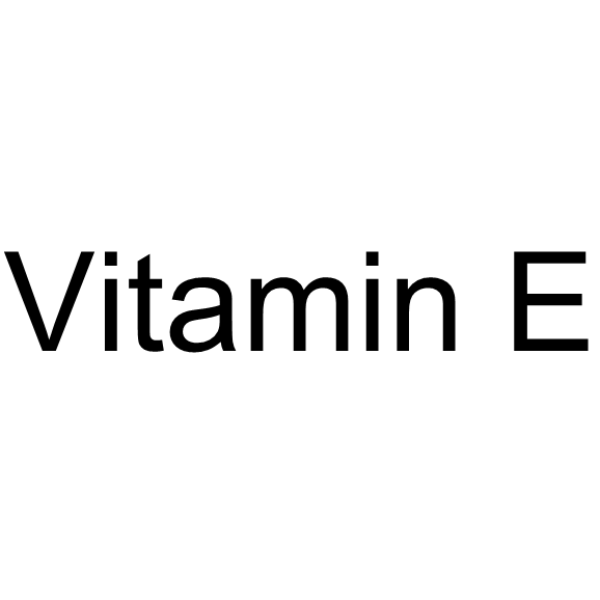1406-18-4
| Name | Tocopherol |
|---|---|
| Synonyms |
EINECS 215-798-8
MFCD00072051 |
| Description | Vitamin E, an essential nutrient for humans and animals reproduction, is a lipid-soluble antioxidant. Vitamin E can protect lipids against oxidative stress, and rescue the glutathione (GSH) depletion-induced hypersensitivity of cells to H2O2. Supplementation with Vitamin E increases its levels in cerebrospinal fluid and plasma, as well as reduces Aβ levels, thus beneficially influences oxidative stress in Alzheimer's disease. Vitamin E also has anti-aging effects[1][2][3][4]. |
|---|---|
| Related Catalog | |
| Target |
ROS, Amyloid-β[1][4] |
| In Vitro | Vitamin E (5-80 μM) rescues the GSH depletion-induced hypersensitivity of rabbit lens epithelial cells (RLEC) to H2O2[2]. |
| In Vivo | Vitamin E (2 I.U./g diet; PO; daily, for 8 months) suppresses brain lipid peroxidation and significantly reduces Aβ levels and amyloid plaque deposition[4]. Animal Model: Tg2576 mice (transgenic model of Alzheimer's disease)[4] Dosage: 2 I.U./g diet Administration: PO; daily, for 8 months (from 5 month-old to 13 month-old) Result: Suppressed brain lipid peroxidation and significantly reduces Aβ levels and amyloid plaque deposition when it is administered early during the evolution of their disease phenotype. |
| References |
| Density | 0.93 g/cm3 |
|---|---|
| Boiling Point | 210ºC at 0.1 mm Hg |
| Melting Point | 3ºC |
| Molecular Formula | C24H34N4O5S |
| Molecular Weight | 490.61600 |
| Flash Point | 210.2ºC |
| Exact Mass | 490.22500 |
| PSA | 133.06000 |
| LogP | 5.26540 |
| Storage condition | 0-6°C |

